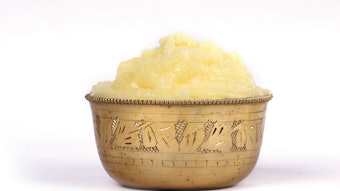
Extended, unprotected exposure to the sun can harm the skin for a myriad of reasons—photodermatoses, or sun poisoning, is a slightly less common but still dangerous effect of sun exposure.
The condition is similar to severe sunburn, which can lead to patient confusion if symptoms go beyond those they may usually get from a day in the sun. Several conditions take the moniker "sun poisoning," which can make a diagnosis difficult—a physical exam, biopsy and sometimes patch testing can be used to find a precise diagnosis.
Sun Poisoning Variations
Robin Travers, M.D., broke down the variations of sun poisoning for Skin Inc.
Polymorphous Light Eruption (PLME): Fairly common and triggered by UVA and UVB rays, PLME typically occurs only after the first few bouts of sun exposure for the year, since people develop a tolerance to the sun as time progresses. Symptoms include a rash that is intensely itchy on forearms, tops of hands, thighs, sides of the face and the v-neck area of the chest.
Photoallergic Reactions: Photoallergies occur when people have become sensitized or allergic to oral medications or topical products (including some ingredients in sunscreens). UVA light triggers these reactions more often than UVB.
Phototoxic Reactions: These reactions are fairly common and are similar to acute sunburn. They occur as a response to tetracycline derivatives and sun exposure and can leave severe redness, swelling and blistering on the tops of hands. Other phototoxic reactions include phytophotodermatitis, which is a response to topical agents on the skin, and reactions to furocoumarin, a chemical in many plants such as limes that can cause intense symptoms.
Solar Urticaria: This rare condition is potentially the most severe of the varieties of sun poisoning. Solar urticaria can be triggered by any type of UV light, though UVA is the most common culprit. Hives occur after a short time in the sun and can lead to anaphylactic shock after full body exposure to sunlight.
Contact Dermatitis: Eczema sufferers are not necessarily at a higher risk for sun poisoning, but they, and people with other inflammatory skin conditions, can develop photoallergic contact dermatitis.
Treatment
Sun protection is key to prevent these conditions. Clients should reach for a high SPF broad spectrum sunscreen in order to protect from both UVA and UVB light, along with protective clothing—clothing lines exist to specifically prevent UV exposure. Clients can also find relief by eliminating irritants that may be causing their reactions.
If the damage has already been done, hydration and ibuprofen can help with sunburn-like symptoms. Application of hydrocortisone ointment (according to Travers, the greasier the ointment, the better), along with cool baths, compresses and gels such as aloe vera can provide relief.










